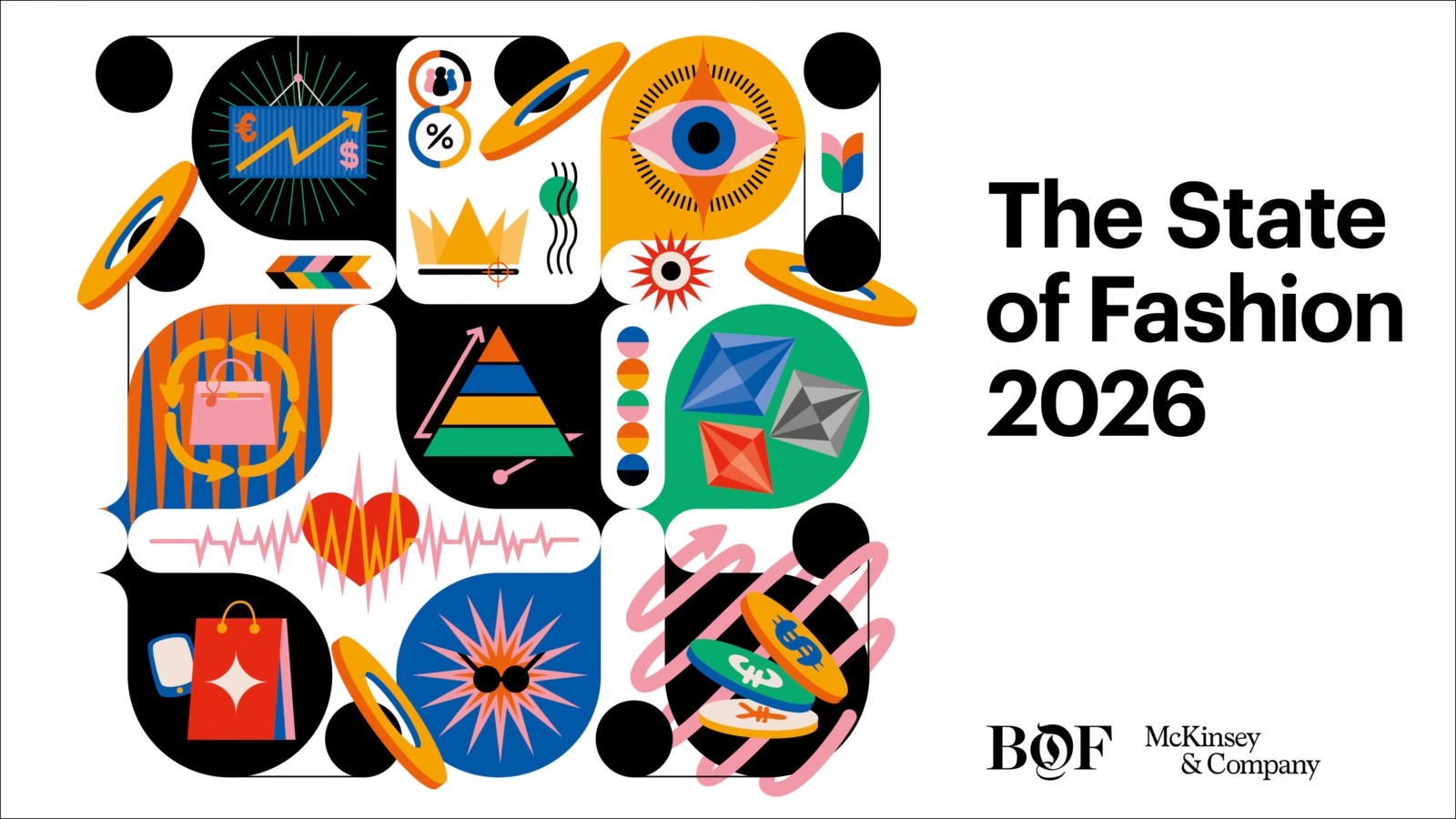The 10 Forces That Will Redefine Luxury and Fashion in 2026

Based on The State of Fashion 2026: When the Rules Change (McKinsey & Company + The Business of Fashion)
The global luxury and fashion industry enters 2026 facing an environment where long-established rules no longer apply. Market stability is shifting, consumers are becoming more complex, and brands must navigate a world where technology, wellbeing, creativity and efficiency intersect. McKinsey and The Business of Fashion identify ten forces that will guide this new stage.
1. Tariff Turbulence: A Trade Map in Transition
New tariffs—especially those introduced by the United States—are reshaping global supply chains and increasing costs across sourcing, manufacturing and distribution. For luxury brands, this is a moment to strengthen localized production, increase transparency and elevate provenance as a storytelling asset. Optimizing the industrial footprint will be essential for protecting margins while reinforcing brand identity.
2. Workforce Rewired: Talent Reinvented
Automation and artificial intelligence are transforming job roles rather than eliminating them. Fashion and luxury companies now need hybrid profiles capable of blending creative intuition with technical and analytical competencies. Internal reskilling becomes a strategic priority, enabling teams to collaborate fluidly with AI-driven systems and new digital tools.
3. The AI Shopper: The Rise of Intelligent Consumer Intermediaries
Consumers increasingly rely on intelligent agents that recommend outfits, compare styles, anticipate needs and handle purchases. Luxury brands must optimize their digital product information, enrich semantic descriptions and ensure visibility across AI discovery engines. Hyper-personalization becomes the new standard, with AI acting as a concierge that elevates the luxury experience.
4. Jewellery Sparks: A Category on the Rise
Jewellery is experiencing stronger growth than any other fashion segment, driven by self-gifting, expanding male interest and the perception of long-term value. For luxury houses, this opens avenues for creative expansion, additional product lines and deeper storytelling around craftsmanship, heritage and emotional meaning.
5. Smart Frames: Where Fashion and Technology Converge
Smart eyewear is emerging as the next major wearable category. This unlocks new opportunities for collaborations between luxury groups and technology companies. The challenge lies in defining the product’s core identity: a tech object with a premium aesthetic or a fashion accessory enhanced with intelligent features. Success will depend on the ability to merge innovation with style in a coherent narrative.
6. The Well-being Era: Wellness as a Central Lifestyle Marker
Consumers increasingly seek brands that reflect balance, purpose and emotional connection. Well-being is becoming a key dimension of desirability. For luxury, this translates into opportunities to build experiential spaces and services: private wellness clubs, sensory environments, bespoke well-being programs and holistic collaborations. These initiatives strengthen loyalty and diversify revenue streams.
7. Efficiency Unlocked: Technology as a Productivity Engine
Economic moderation demands operational efficiency in manufacturing, logistics, retail and design. Digital ateliers, virtual prototyping, automated stock management and data-driven planning help brands release resources that can be reinvested into creativity, craftsmanship and elevated customer service. Efficiency becomes the silent engine that supports the highest expression of luxury.
8. Resale Sprint: The Rapid Expansion of the Second-hand Market
The resale market is growing two to three times faster than the primary fashion market. It is no longer a peripheral trend but a strategic channel. Luxury brands that build or control their own resale ecosystems gain influence over authentication, restoration and customer experience, reinforcing long-lasting value and attracting new aspirational buyers.
9. The Elevation Game: Competition in the Premium Space
More brands are aiming to move into higher tiers, offering better quality and more elevated pricing. Premium positioning is expanding, intensifying competition for attention and loyalty. Luxury houses must respond by reinforcing their differentiating elements: exceptional service, refined materials, deeper storytelling and distinctive design. Elevation is not about charging more; it is about offering more.
10. Luxury Recalibrated: A Return to Authentic Foundations
After years of accelerated growth, luxury enters a phase where authenticity, craftsmanship, creativity and emotional connection regain prominence. Consumers look for genuineness over pure status. Heritage, artisanal mastery, timeless design and impeccable service become central pillars for the next chapter. Brands able to reinterpret their origins for a digital world will strengthen their cultural relevance.
The year 2026 marks a shift in priorities for luxury. Technology, well-being, efficiency and authenticity move together in shaping the industry’s future. Luxury brands that understand how to balance these forces—innovating boldly while honoring their roots—will lead the next decade. The challenge is to evolve without losing essence, and to create value in ways that resonate deeply with a fast-changing global consumer.
Link to the Full Report
Access the McKinsey/BoF report The State of Fashion 2026: When the Rules Change here:
https://www.mckinsey.com/industries/retail/our-insights/state-of-fashion
Share/Compártelo
- Click to share on LinkedIn (Opens in new window) LinkedIn
- Click to share on WhatsApp (Opens in new window) WhatsApp
- Click to share on Facebook (Opens in new window) Facebook
- Click to share on X (Opens in new window) X
- Click to share on Threads (Opens in new window) Threads
- Click to email a link to a friend (Opens in new window) Email
- Click to print (Opens in new window) Print
- More
Related
Discover more from LUXONOMY
Subscribe to get the latest posts sent to your email.
















